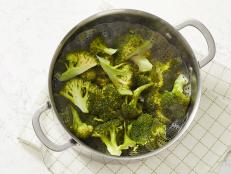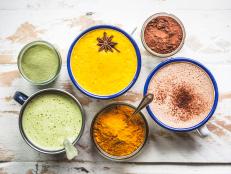Hydroponic Farming Is Here and It's Growing. Here's What You Should Know

pailoolom
Soil seems so essential to our concept of vegetables that those grown hydroponically – that is, in water rather than soil – may seem confusing. Even futuristic. But hydroponic crop farming is in fact here now. In the last five years, the hydroponic crop farming industry has shown an annual growth of 4.5 percent, according to the U.S. market research firm IBISWorld, and new companies are projected to continue to expand over the next five years.
Hydroponic farms produce high yields in a small area. Often grown indoors – in warehouses or greenhouses and in artificial light instead of sunlight – they are protected from extreme weather. Hydroponically grown vegetables, which are fed by nutrient solutions in the water, may be just as nutritious as field-grown vegetables and, depending on the solutions they’re fertilized with, can help meet the rising demand for organic produce.
Curious to learn more about hydroponic vegetables, we asked Rebecca Elbaum, MPH, RD, CDN, a clinical dietician in New York City who has worked with hydroponic farms, particularly small, rooftop gardens, to fill us in on some of the basics:
What, exactly, are hydroponic vegetables?
Hydroponic literally means “water-grow or survive,” so basically hydroponic vegetables are those that survive, and likely thrive, in water. Hydroponic vegetables are grown in a closed system in which their roots are submerged in water. This water is fortified or “spiked” with nutrients, such as potassium, magnesium and phosphorus.
In conventional farming, natural soil contains vitamins, minerals and trace elements that water does not, so hydroponic farmers need to add those nutrients into the water. Conventional farming also uses the natural light of the sun, which helps vegetables develop their nutrients. Hydroponic farming mimics sunlight through greenhouses.
How do they compare to field-grown vegetables from a nutritional standpoint?
It is not yet fully known whether hydroponically grown vegetables are nutritionally superior to conventionally grown ones. There are studies that show the nutrient content to be the same, while there are others that show hydroponic vegetables to be richer in nutrients than conventional.
While we can artificially add nutrients to water, we might not know certain components in soil that are important for the growth of nutritious vegetables. We also don’t know the impact of natural sunlight versus greenhouse light on the nutritional quality of the vegetables.
What are some of the nutritional advantages of hydroponic vegetables, and what are the disadvantages?
In hydroponic cultivation, nutrient quality can be very carefully controlled. While nutrients are also added to soil in conventional farming, it is more difficult to control and more likely to have fluctuations in its nutrient content. The downside of hydroponic vegetables is that how trace elements in soil affect the nutrition of vegetables is unknown. We might not be able to replicate the nutrient quality as well in hydroponic farming.
Another advantage is we can grow almost any produce locally, all year round. Lettuce and tomatoes grow beautifully hydroponically. A local tomato contains more nutrients than one that has been imported and has sat on a truck for a few days before making it to your plate.
Do you see hydroponic vegetables as assuming a greater role in American diets?
Since hydroponic vegetables can be grown just about anywhere with the right space, I do think they will become more prevalent in American diets. Hydroponic gardens are playing a bigger role in cities, with people growing fruits and vegetables on their rooftops. With a growing population and climate change, alternative methods of growing fruits and vegetables are coming into play.
We may already be buying hydroponic vegetables in grocery stores without knowing it. Growing hydroponically allows us to grow a variety of fruits and vegetables locally, rather than importing them from other countries, which causes a loss of nutrition in transit. This not only improves the nutritional quality of the vegetables that make it our plates or kitchens, but it is almost more environmentally friendly.
We unfortunately won’t know the nutritional impacts of hydroponic vegetables for a number of years, as more studies need to be done, but I think we will see them become more prevalent in grocery stores and on menus.
What do you see as the key takeaway for consumers here?
Bottom line: Eat vegetables. These alternative methods are growing and are here to stay with the boom in agricultural technology and climate change. Since we don’t have conclusive evidence at the current time about which method produces nutritionally superior vegetables, I would tell my patients to buy any vegetables they can get their hands on.
Since very few people actually consume the three servings of vegetables and two servings of fruits recommended daily, I would not want to restrict consumers further on what produce they should buy. As the research continues to grow however, it will be interesting to see if indeed hydroponic vegetables can be nutritionally superior to conventional.
Also, though it would be great to have delicious local lettuce and tomatoes all year round, there is something very special about savoring the fresh tomatoes of summer while they are in season.
Related Links:
Amy Reiter is a writer and editor based in New York. A regular contributor to The Los Angeles Times, she has also written for The New York Times, The Washington Post, Glamour, Marie Claire, The Daily Beast and Wine Spectator, among others, as well as for Salon, where she was a longtime editor and senior writer.

































